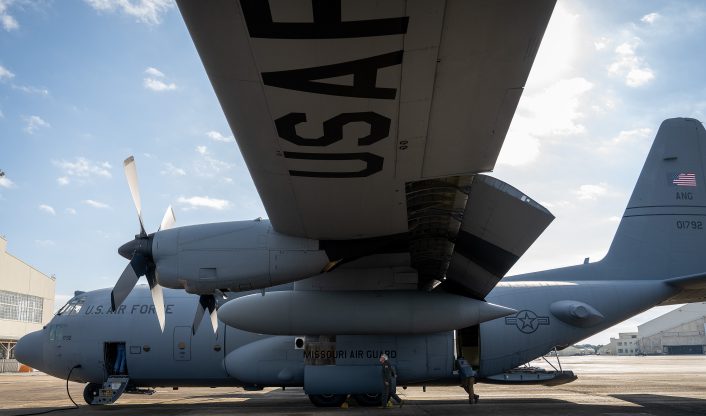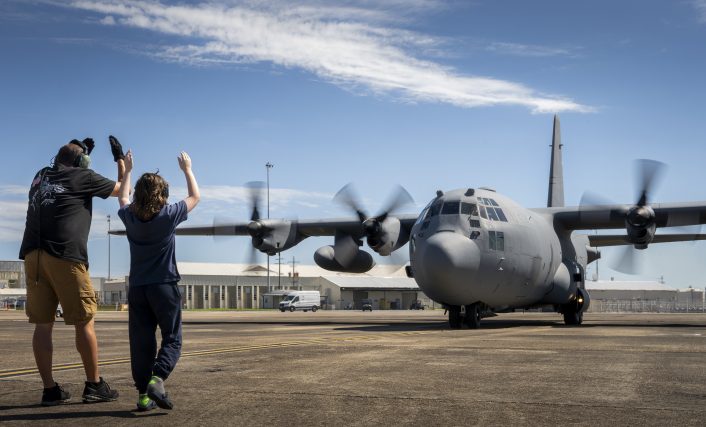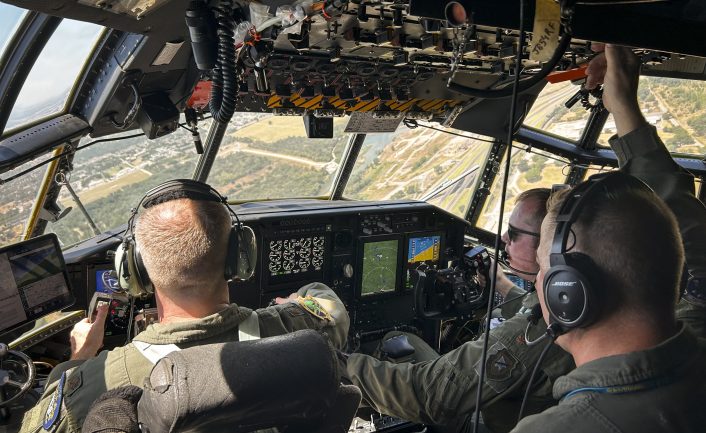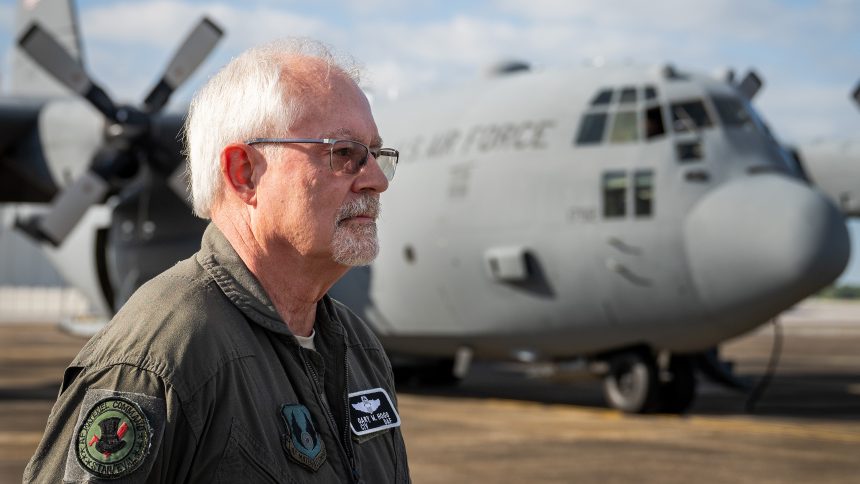10,000 flight hours in the C-130: the most hours ever recorded by a pilot in the Hercules.
On Sept. 24, 2024, Gary Hogg, a seasoned test pilot logged his 10,000th flight hours in the C-130 Hercules aircraft. The milestone was achieved during a routine C-130H avionics modernization test.
Across his 41-year career, Hogg has flown the Hercules for the equivalent of more than 416 days.
Hogg, now a civilian pilot with the Air Force Materiel Command, reflected on this significant achievement in a recent press release: “It’s a milestone I never thought possible, but I’m so thankful I had the chance to live it,” said the 65-year-old Kentucky native. “Looking back on the last 40-plus years, I know I’ve truly been blessed.”
His journey with the C-130 began on Nov. 23, 1983, at Little Rock Air Force Base, Arkansas, where he completed his qualification training. Shortly after, he deployed to Europe and quickly fell in love with the aircraft that would define his career. Originally considering flying the RF-4 or A-10 Thunderbolt II, Hogg found that the teamwork involved in flying the C-130 made it the perfect fit for him.
In 1988, Hogg transitioned into special operations, flying the C-130E and MC-130E Combat Talon models. During this period, he faced his most challenging mission in 1993 while supporting a fleet of MH-53 Pave Low helicopters en route to Haiti. Amid heavy storms and low fuel, Hogg’s crew managed to land safely, a feat he attributes to teamwork and perseverance.
In 1993, Hogg was introduced to C-130 flight testing, which later defined the second phase of his career as a civilian pilot. He worked in special operations at Robins AFB, Georgia, and eventually with the Air Force Materiel Command (AFMC), amassing experience with nearly every C-130 variant in the Department of Defense.

In his current role as a standardization and evaluation command chief pilot for AFMC, Hogg continues to test new C-130 models and capabilities. His wealth of knowledge and experience is invaluable to the Det. 1 unit and the 417th Flight Test Squadron at Eglin, where he serves as a go-to resource for C-130 operations.
Hogg’s 10,000-hour achievement, which averages about 243 hours per year, also translates to more than two million miles flown. Upon completing the milestone flight, he was greeted by family and colleagues, including his grandson Anthony, who helped marshal his aircraft into place.

Reflecting on the accomplishment, Hogg highlighted the teamwork that has been at the core of his long career: “A smooth-running team is just pure joy in the air.”
The C-130H modernization program
As mentioned, Hogg achieved the 10,000 FH mark during a C-130H avionics modernization test.
In 2023, the U.S. Air Force Reserve Command initiated a comprehensive modernization effort for its fleet of C-130H Hercules aircraft, marking a significant leap in the aircraft’s capabilities. This upgrade, known as the Avionics Modernization Program Increment 2 (AMP Inc 2), is focused on transitioning the nearly 60-year-old aircraft from analog systems to state-of-the-art digital avionics. The modernization introduces a variety of advanced systems designed to enhance the C-130H’s operational effectiveness, including a new flight management system, autopilot, and large glass multifunctional displays that replace the aging analog instruments. The AMP Inc 2 upgrade also integrates digital engine instruments and a Terrain Awareness and Warning System (TAWS), which provide a more streamlined and efficient cockpit interface for pilots.
The modernization program is aimed at supporting the U.S. military’s broader mobility air forces to meet the evolving demands of the National Defense Strategy. By digitizing the aircraft’s avionics, the program significantly improves the efficiency of in-flight navigation and mission planning. For example, under the old system, pilots needed several minutes to update flight plans manually, using latitude and longitude coordinates entered into the aircraft via external devices like tablets or laptops. With the AMP Inc 2’s new multifunctional displays, flight plan modifications can be made in a matter of seconds using a simple point-and-click interface, enhancing situational awareness and reducing workload during critical missions.
Additionally, the integration of the TAWS represents a crucial advancement for tactical flying, as it provides real-time terrain and obstacle avoidance, ensuring safer low-level flight operations. This system, combined with the new digital navigation tools, enables faster decision-making and more precise maneuvering, which are essential for military operations in complex environments.

Testing for the new avionics systems has been ongoing since 2017, with the 417th Flight Test Squadron leading the developmental testing phase. In 2023, they began testing the AMP Inc 2 modifications on several C-130H aircraft. The testing process is expected to continue through the year, examining the performance of these newly-installed systems, none of which previously existed in the C-130H fleet. Once developmental testing is complete, the operational testing phase will commence at Little Rock Air Force Base, Arkansas, where Air National Guard and Air Force Reserve units will further evaluate the upgrades under real-world mission conditions.
The AMP Inc 2 modernization effort will affect over 75 C-130H aircraft in the Air Force Reserve and Air National Guard fleets over the next five years. With an estimated cost of $7 million per aircraft, the program represents a significant investment in extending the lifespan and capability of the C-130H fleet, ensuring it remains a vital component of U.S. military air mobility for years to come. This modernization is poised to improve operational readiness, mission flexibility, and overall flight safety for the C-130H, keeping it relevant in modern warfare and humanitarian operations.









